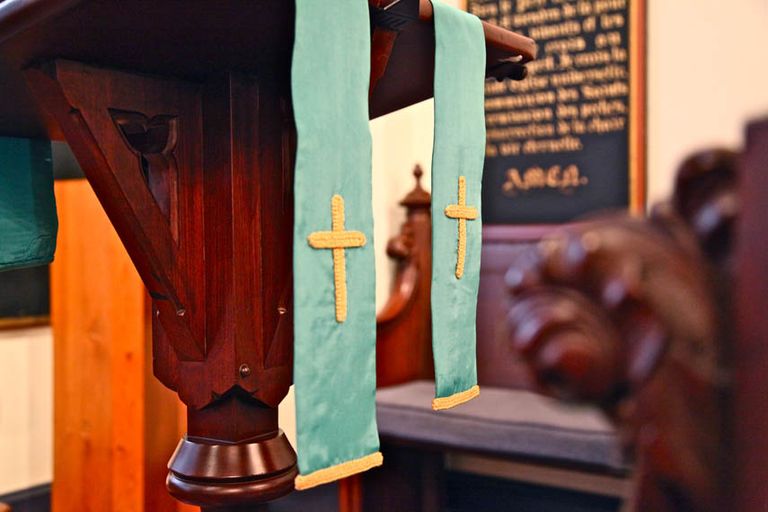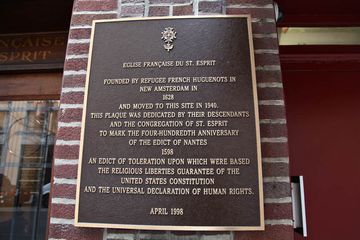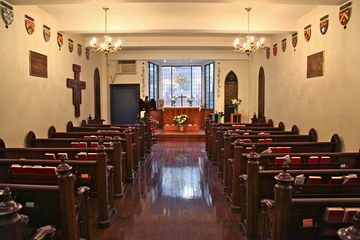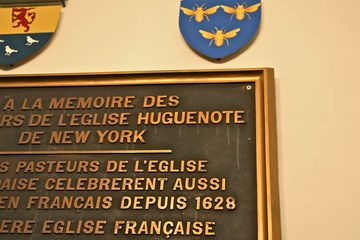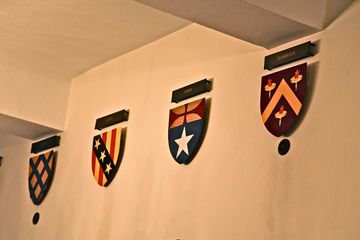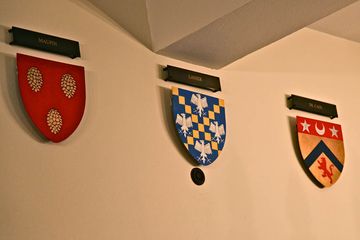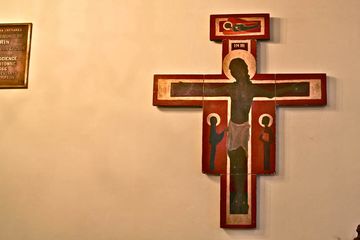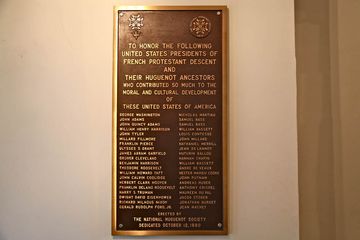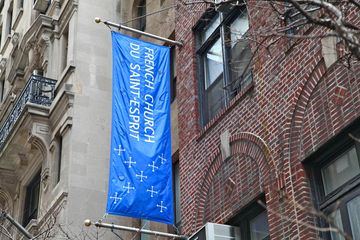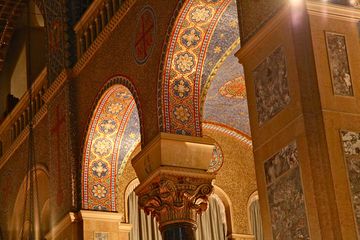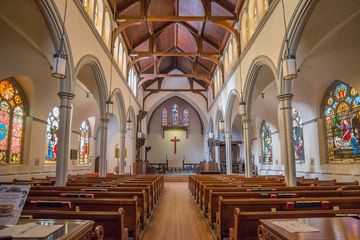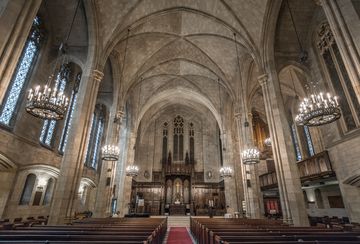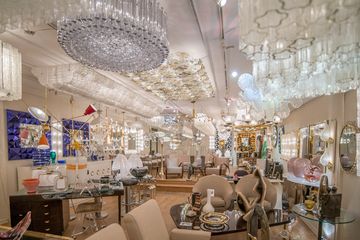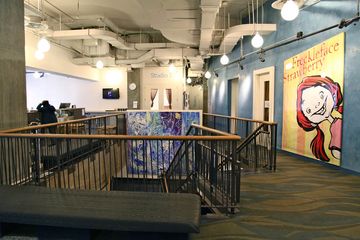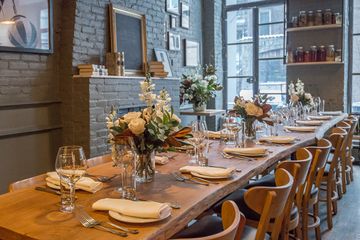Facing a dwindling congregation, increased costs, and an exterior in desperate need of renovation, Saint Peter's Church was razed in 1971. What rose from the ashes, however, was a structure that preserved all of the history and sanctity of the old church, built in 1905, while presenting an innovative, modern design. The new Saint Peter's is indeed a place of worship for the twenty-first century and beyond. The exterior looks nothing like a traditional church. In fact, if passers-by do not take the time to look closely at the lettering, they might not realize that St. Peter's houses one of New York's largest Lutheran congregations. The open, unadorned lobby gives few clues as to what lies beyond. The space is massive, beginning below ground and stretching up several stories to a soaring ceiling. It includes many rows of pews and even a full orchestra pit, where groups unaffiliated with the church are invited to practice and perform. In addition to the larger sanctuary, Saint Peter's second iteration offers a smaller private chapel designed by Louise Nevelson, the first American artist in the United States to have been chosen for this honor. My mother, an award-winning biographer, had the pleasure of interviewing and getting to know this grand woman of the twentieth century as she was writing Breaking Tradition: The Story of Louise Nevelson, published in 1984. To quote from Natalie S. Bober's biography on the Good Shepherd chapel: "the sculptures that suggest grapes and grain, the Trinity and the Apostles, the striking white and gold crucifix, the benches for meditation, even the priests' vestments, were all designed by Louise Nevelson. In the Chapel of the Good Shepherd she showed her tremendous versatility.... in the almost blindingly beautiful all-white chapel, an oasis of calm within the huge and bustling Citicorp Center. The tiny chapel, an oddly shaped five-sided room, seats only twenty-eight people in pews set herringbone fashion, instead of facing the altar. Each wall holds a typical Nevelson sculpture that manages to strike a delicate balance between religion and art. 'Why had a Russian-born Jewish artist been selected to design a Lutheran chapel in New York? ' the pastor of St. Peter's was asked. 'Because she's the greatest living American sculptor, ' was his reply. "A huge admirer of Dale Chihuly, I was exuberant when I discovered that St. Peter's also proudly displays original work by Mr. Chihuly, the American artist best known for his startling, brilliant glasswork. On permanent loan are two "Macchia" bowls safely placed in the senior pastor's office, as well as a striking painting that hangs in the outer office of the church for all to appreciate. The painting, done on the premises by Chihuly in 1994, is a study in vibrant reds and yellows. Apparently, he arranged a series of bowls ascending vertically in the church so that he could refer to them while sketching. Today, the only visual trace of the old St. Peter's is a large black and white photograph depicting the church as it stood in the early 1900s. The entire space, however, is suffused with its history. Though completely modern on the outside, its deep roots allow a continuity between New York's past and its present. The church has been in existence for over 150 years, and, no doubt, will continue to grow and adapt in the years to come.
